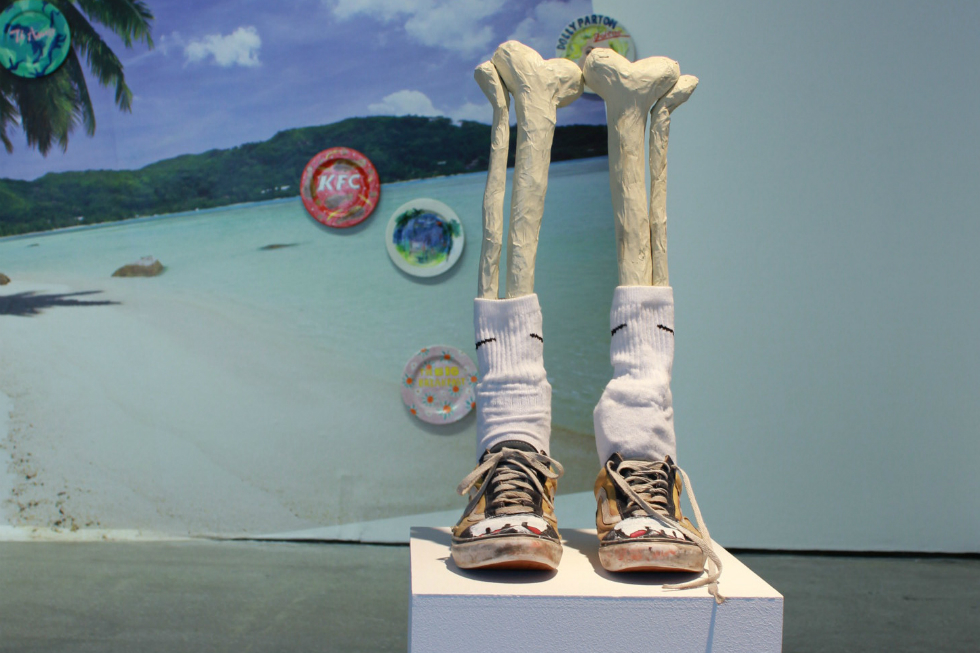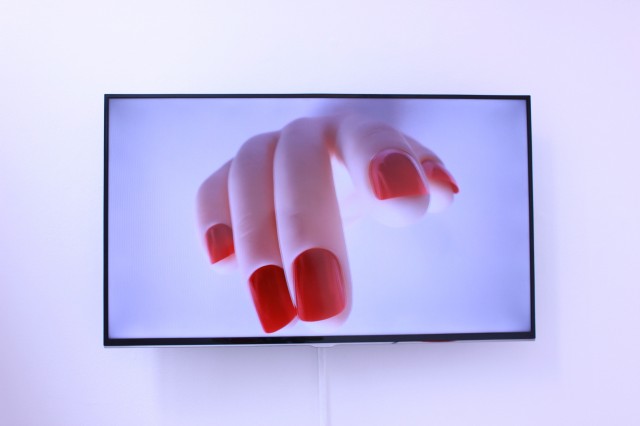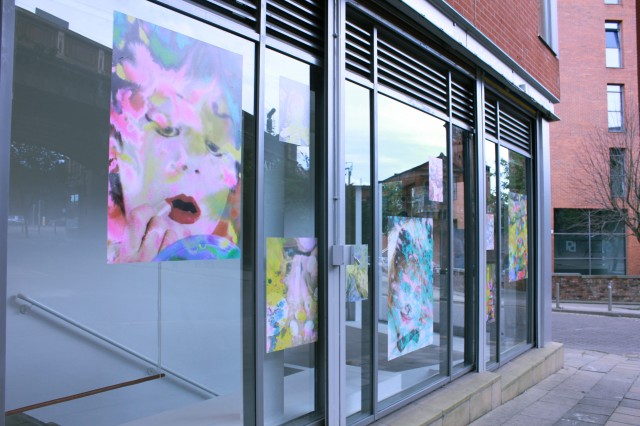LaunchPad: It Was A Dark And Stormy Night — Reviewed

Bizarre, chaotic and optimistic: Naomi Cull finds that banning the curator at Castlefield Gallery has a liberating and playful effect on the artists…
What seems like a conventional group show — a selection of artists exhibiting work around a central theme — in fact follows an unfamiliar format. Featured as part of the LaunchPad programme at Castlefield Gallery, which gives up-and-coming artists, writers and independent curators the chance to exhibit, group show It Was A Dark And Stormy Night subverts the traditional role of the curator and replaces it with… a story.
And not just any story; this tale was constructed by the artists themselves: Graeme Durant, Jemma Egan, Florent Dubois, Lindsey Medick, Suzanne Posthumus and Josh Whitaker. The only starting point was: ‘It was a dark and stormy night …’; with each artist adding a section or chapter, passing it on to the next in a sort of literary relay. The story circulated the group four times before the tale was complete. The result? A strange and disorienting tale of… well, I’m not entirely sure. Characters are vague and mysterious; the plot erratic and at times absurd.
Yet the work is rarely as dark and stormy as the title assumes. The artists have depicted elements of the story that reflect an overall sense of fun. Florent Dubois’s work takes its name directly from the narrative and sets the dreamlike, psychedelic tone before we even enter the gallery. I Saw Myself In The Shell Mirror You Made During The Craft Class We Took Together With J And Helen And Understood Why You Won’t Look At Me (2015) is pasted onto the glass windows, like multi-coloured flyers for underground club nights. Faces and hands appear behind the splodges; lurid colours distorting the images. The story is manifest in reality: ‘After a second hit strange colours started to appear creating waves and whirls, just like if the paintings I make were moving.’
The dreamlike confusion continues inside. Durant’s painted light boxes Scène d’Été (2015) and You’re Giraffing Me Crazy (2015) flash on and off: much like the effect of the narrative, you feel like you’re drifting in and out of consciousness. Despite the chaotic nature of It Was A Dark And Stormy Night, the works exhibited do present a coherent, unified body. Many of the works share a common colour scheme, which is surprising given that the artists were completely in the dark about the other works right up until installation day. Peperami wrapper green features alongside an injection of red from painted fingernails and the KFC logo.

Along with other familiar logos, these everyday cultural references are of the moment, probably not existing five to 10 years ago and unlikely still as popular five to 10 years from now. Largely synthetic and mass-produced, these products sit somewhere on the line between real and fake, a theme which features throughout It Was A Dark And Stormy Night. As we read the story, it moves fluidly between dreams, reality and a psychedelic neither-here-nor-there state that dislodges you from your position as viewer like the bendy straw out of a Pepsi cup. ‘A cool cup of Pepsi’, the story reads, ‘bobs up and down next to me in the gravy; I take a sip from the bendy straw, which is gradually floating, up and out of the cup.’
In the absence of a curator, we are left to form our own comparisons and connections. Durant’s sculpture Consequence Of Love (2015) – a pair of skeleton legs in muddy Vans trainers decorated with painted toenails — references a sheep’s corpse pulled from a puddle by the story’s protagonist. An unsettling parallel is drawn with the KFC chicken thighs painted onto Lindsey Mendick’s work Our Earthly Paradise (2015). Walking in front of a projector displaying Egan’s video work Gravy (2015), a rippling mass of chips and gravy, I see my own, not so chicken-like legs silhouetted. I am part of the story now.

Having had just a month to create both narrative and all new artwork, It Was A Dark And Stormy Night feels fresh and almost temporary. We are unsure what will happen next. No contrived connections have been made by a curator: any similarities you see are a result of, and illuminated by, the story the artists have written. But the result feels a little unfinished. The text, which is so integral to this alternative format of exhibition, isn’t as prominent as you would expect. Although you catch snippets and glimpses of the narrative from the audio recording playing in the gallery (we find out later it is performed by someone called Snake Man which somehow seems fitting), at no point can you fully grasp what is going on, even with the story in hand. Much like in a dream, the narrative fluidly moves between psychedelic macabre and reality: ‘Slowly reality begins to slip away from me and I want to believe we are on a psychedelic bad trip but somewhere I know it’s not just in our heads.’
Reflecting on this alternative way of creating a group exhibition, Durant and Egan suggest similarities between the unfamiliar curatorial process and blind or internet dating. There was minimal communication in the run up to the installation, other than the construction of the story. Following this, in a sort of excitable frenzy, the individual members prepared for their ‘date’, and the exhibition has a similar result. It Was A Dark And Stormy Night is a rollercoaster tale of boy meets girl, punctuated by the sort of mundane yet magical associations you make in those doe-eyed early stages of romance. It is a contorted and disfigured fairytale on LSD.
Rather than be bogged down in the gloomier details of this dark and stormy night, all gaudy low-culture and rotting sheep’s corpses, the works on display smirk in the face of this madness. For all their absurdity, humour and wit, these pieces make a strong claim for optimism, bringing laughter and intrigue to a dark and stormy tale.
Naomi Cull
Launchpad: It Was A Dark And Stormy Night was at Castlefield Gallery, Manchester, from 28 August 2015 until 6 September 2015
Castlefield’s next CG Associates event is WORK-TO-RULE, 29 September 2015, 6:30-8:30pm; artist Rosalie Schweiker will gently introduce you to her current workload hell to start a discussion about what it would mean if artists and institutions worked to rule, had a lie-in or stopped building their identities on work. Join here
This article has been commissioned by the Contemporary Visual Arts Network North West (CVAN NW), as part of a regional critical writing development programme funded by Arts Council England — see more here #writecritical






